Abstract
1. The time course of the changes in presynaptic inhibition of Ia fibres to soleus motoneurones has been investigated during a voluntary ramp-and-hold plantar flexion. 2. Monosynaptic Ia facilitation of the soleus H reflex was evoked by stimulation of the inferior soleus (homonymous) and femoral (heteronymous) nerves. Changes in presynaptic inhibition of the Ia fibres mediating the conditioning volleys were inferred from changes in the amount of reflex facilitation evoked by such constant conditioning stimulations. 3. At the beginning of the voluntary contraction, both homonymous and heteronymous Ia facilitations were markedly increased with respect to their rest values. Then, they dropped abruptly in the middle of the ramp, whatever the ramp duration. 4. The stronger the contraction at the end of the ramp, the larger the initial increase in reflex facilitation. 5. These results indicate that presynaptic inhibition of Ia terminals on motoneurones of the contracting muscle is decreased during the first half of the ramp and then returns to its rest level. It is argued that these changes in presynaptic inhibition are centrally programmed, and it is suggested that, under certain conditions, presynaptic inhibition can be modulated according to both the strength and timing of the contraction. 6. The functional role of the resulting changes in the gain of the stretch reflex is discussed.
Full text
PDF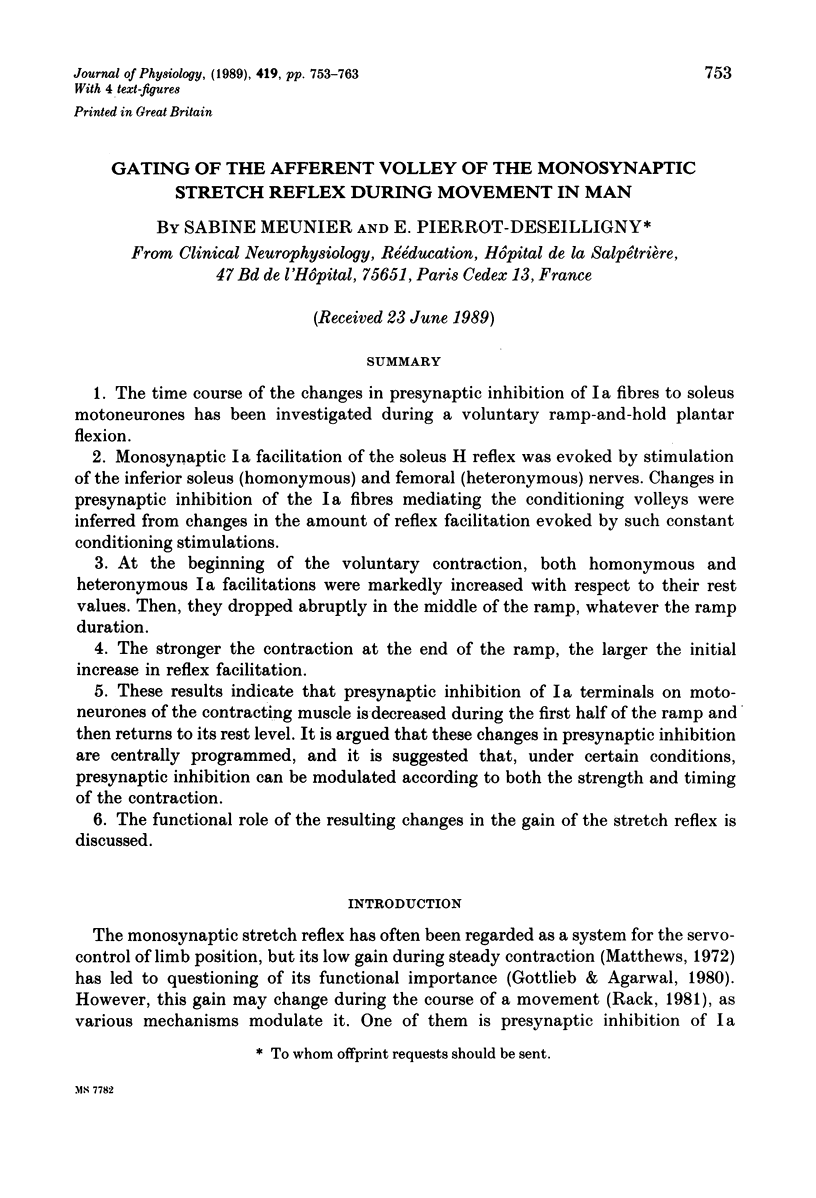
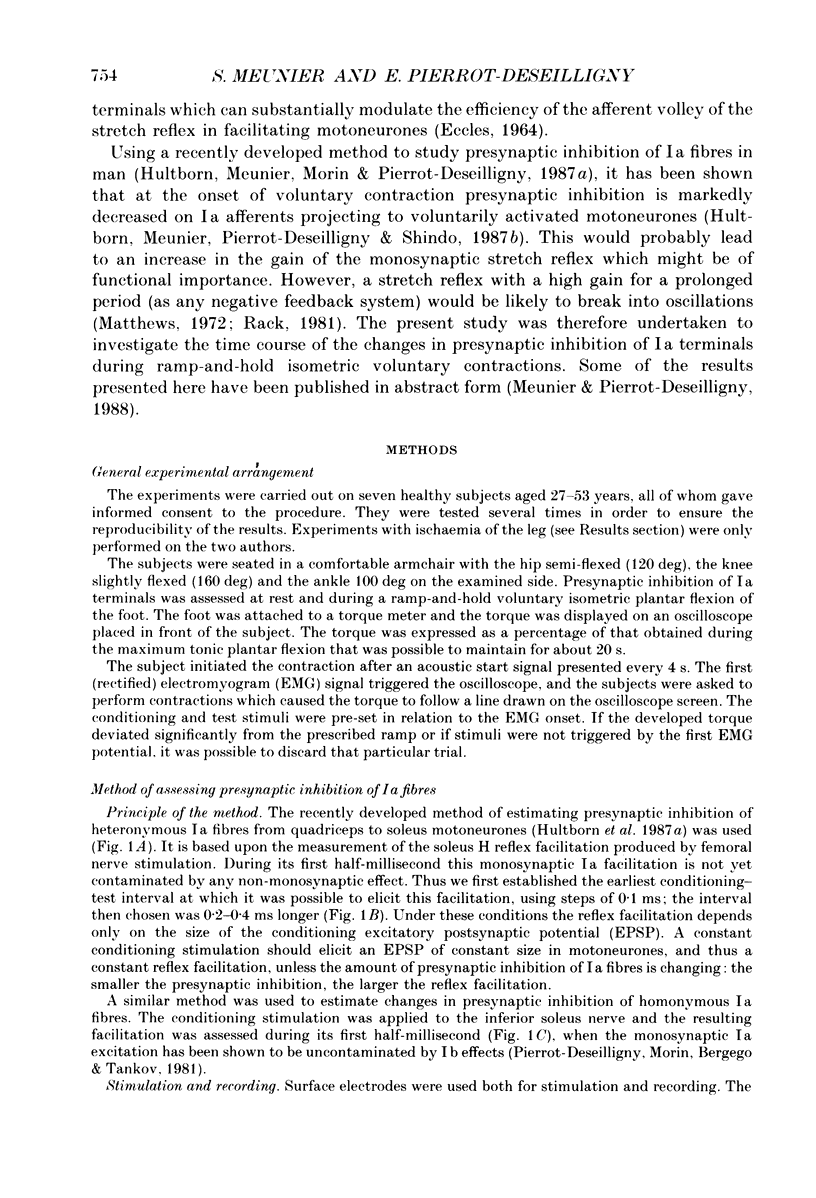

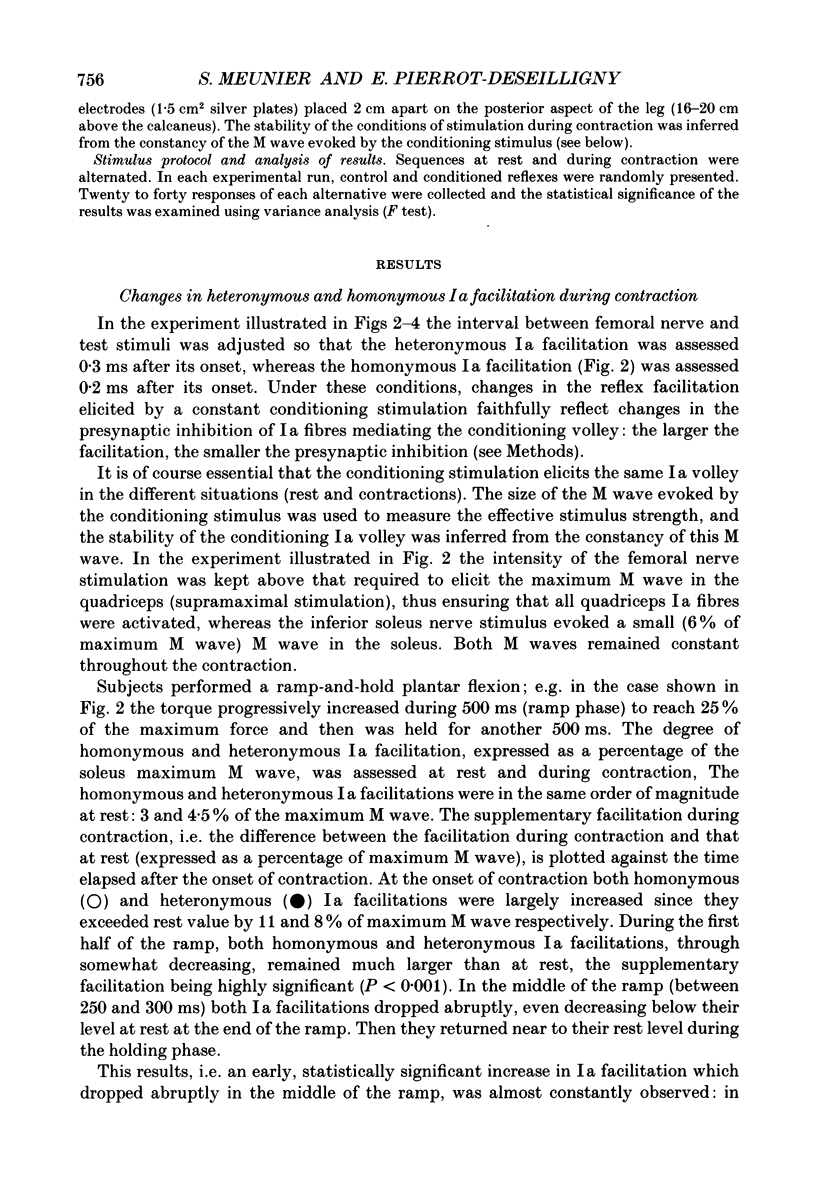
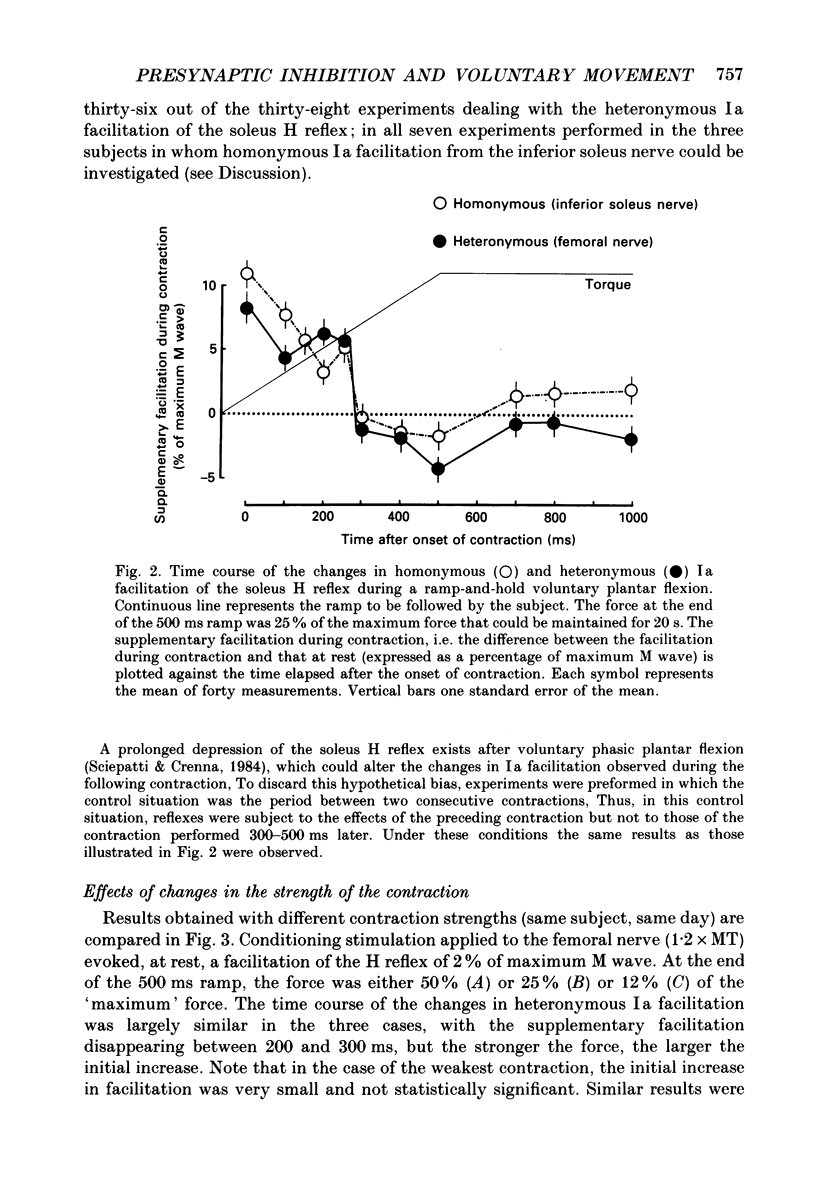

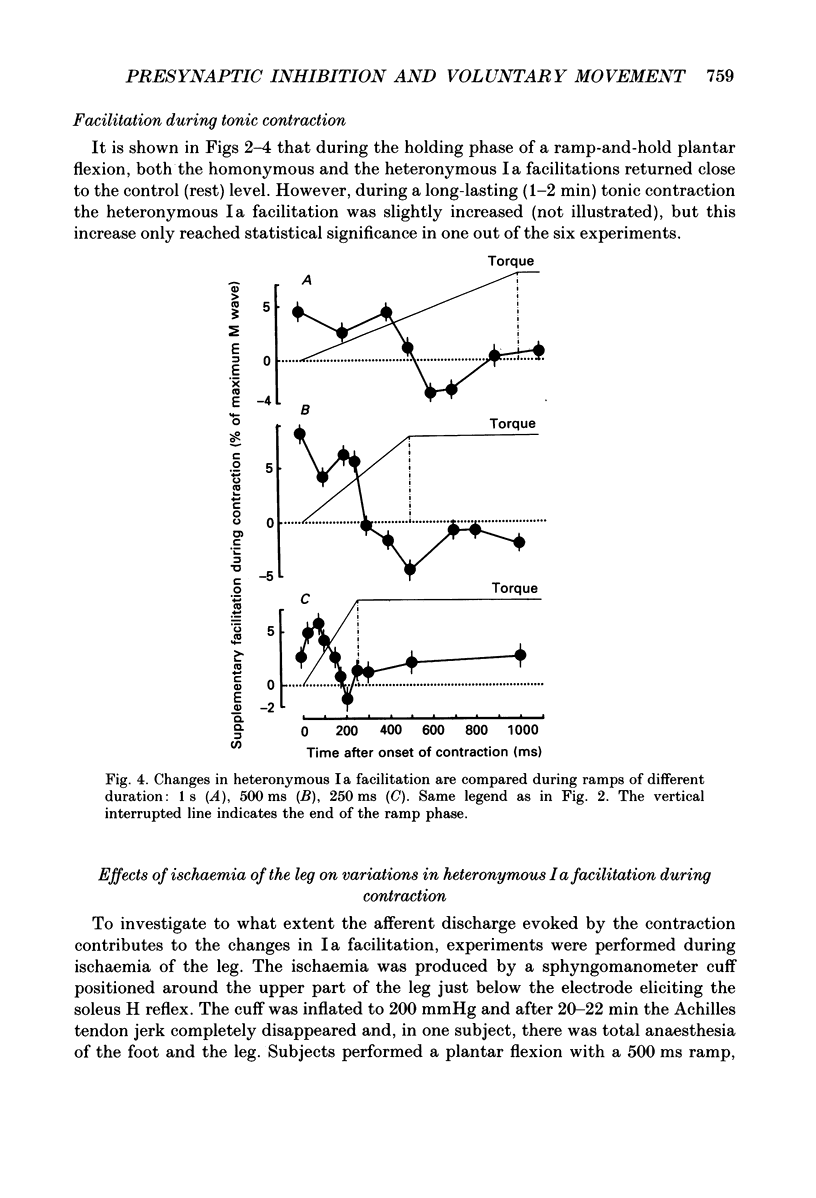
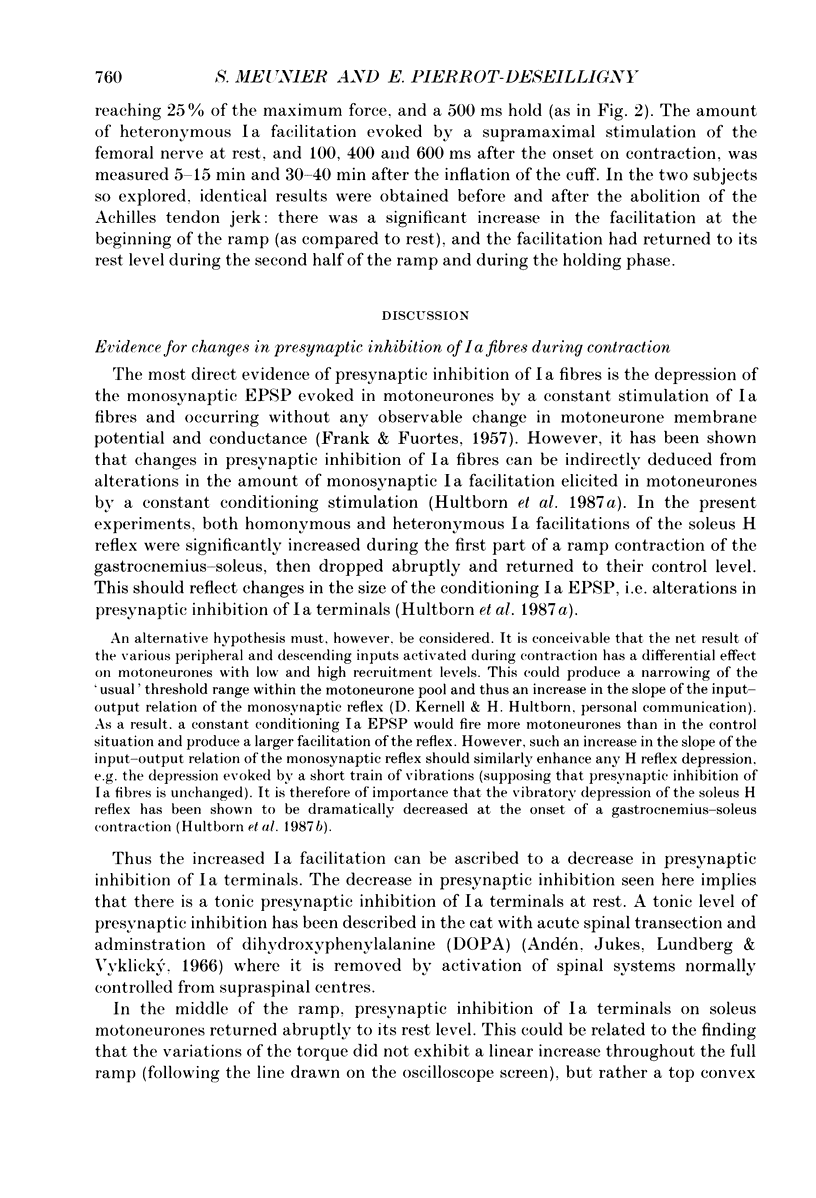
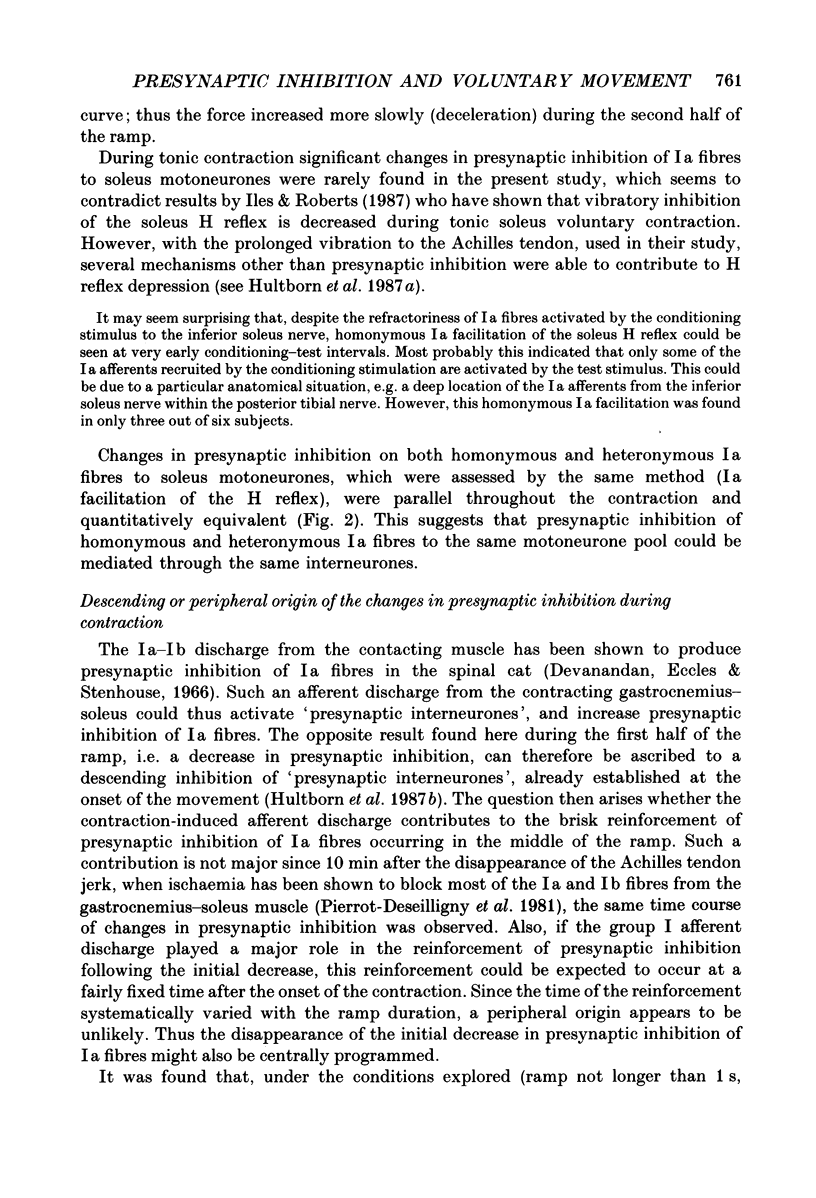
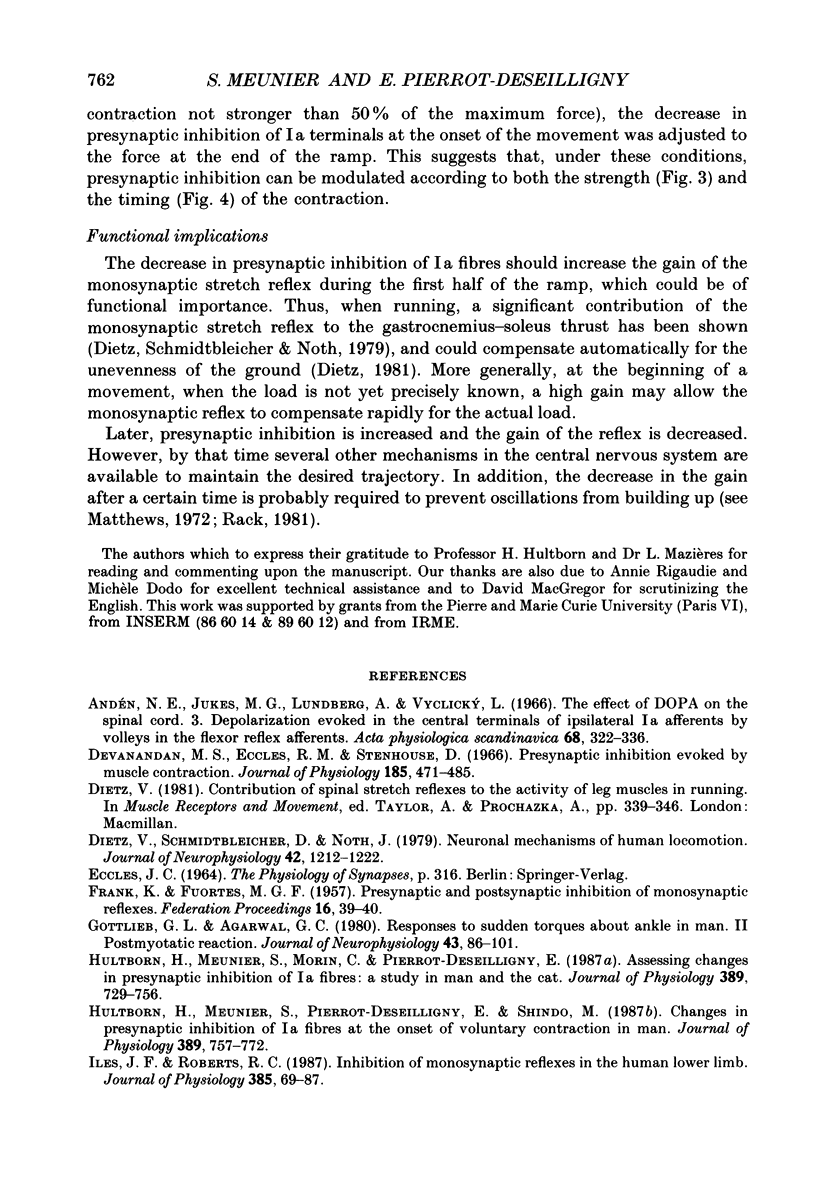

Selected References
These references are in PubMed. This may not be the complete list of references from this article.
- Devanandan M. S., Eccles R. M., Stenhouse D. Presynaptic inhibition evoked by muscle contraction. J Physiol. 1966 Jul;185(2):471–485. doi: 10.1113/jphysiol.1966.sp007997. [DOI] [PMC free article] [PubMed] [Google Scholar]
- Dietz V., Schmidtbleicher D., Noth J. Neuronal mechanisms of human locomotion. J Neurophysiol. 1979 Sep;42(5):1212–1222. doi: 10.1152/jn.1979.42.5.1212. [DOI] [PubMed] [Google Scholar]
- Gottlieb G. L., Agarwal G. C. Response to sudden torques about ankle in man. II. Postmyotatic reactions. J Neurophysiol. 1980 Jan;43(1):86–101. doi: 10.1152/jn.1980.43.1.86. [DOI] [PubMed] [Google Scholar]
- Hultborn H., Meunier S., Morin C., Pierrot-Deseilligny E. Assessing changes in presynaptic inhibition of I a fibres: a study in man and the cat. J Physiol. 1987 Aug;389:729–756. doi: 10.1113/jphysiol.1987.sp016680. [DOI] [PMC free article] [PubMed] [Google Scholar]
- Hultborn H., Meunier S., Pierrot-Deseilligny E., Shindo M. Changes in presynaptic inhibition of Ia fibres at the onset of voluntary contraction in man. J Physiol. 1987 Aug;389:757–772. doi: 10.1113/jphysiol.1987.sp016681. [DOI] [PMC free article] [PubMed] [Google Scholar]
- Iles J. F., Roberts R. C. Inhibition of monosynaptic reflexes in the human lower limb. J Physiol. 1987 Apr;385:69–87. doi: 10.1113/jphysiol.1987.sp016484. [DOI] [PMC free article] [PubMed] [Google Scholar]
- Pierrot-Deseilligny E., Morin C., Bergego C., Tankov N. Pattern of group I fibre projections from ankle flexor and extensor muscles in man. Exp Brain Res. 1981;42(3-4):337–350. doi: 10.1007/BF00237499. [DOI] [PubMed] [Google Scholar]
- Schieppati M., Crenna P. From activity to rest: gating of excitatory autogenetic afferences from the relaxing muscle in man. Exp Brain Res. 1984;56(3):448–457. doi: 10.1007/BF00237985. [DOI] [PubMed] [Google Scholar]


